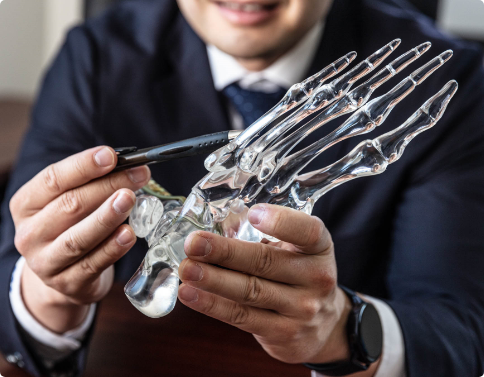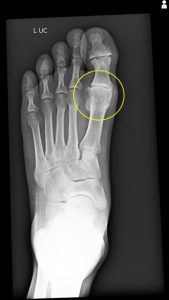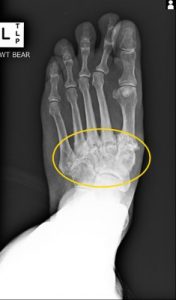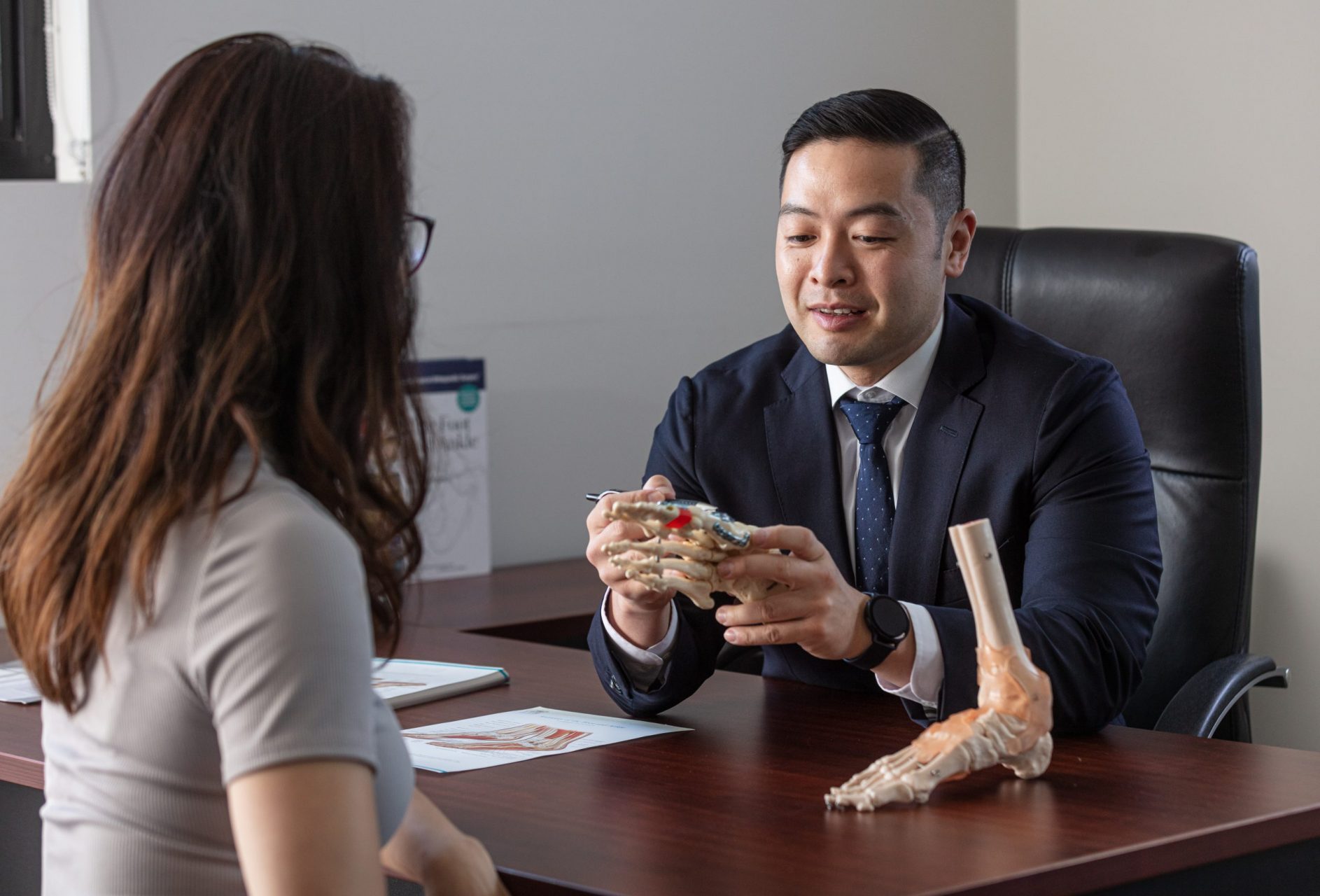Foot Arthritis Conditions
What is Arthritis?
Arthritis is a general term for numerous conditions that damage the function of normal working joints in the body. The foot has 33 joints which are all susceptible to arthritis and can result in degeneration of cartilage, pain, swelling and stiffness.
Do I need surgery for Arthritis in my foot?
Generally, if you have exhausted non-operative measures such as orthotic supports, anti-inflammatories medications and steroid injections and the pain restricts your everyday activities you should seek a surgical opinion.
What are the different types of Arthritis?
Osteoarthritis is the most common form of arthritis. This results from damage to joint cartilage from degeneration associated with age and use. Cartilage is the protective cushion within the joint and as it wears the underlying bone is exposed and causes contact with adjacent bone resulting in inflammation, pain, and stiffness.

Post-traumatic Arthritis may develops following trauma such as broken bones (fractures), ligament damage or sprains which leads to the joint developing arthritis. The arthritis can develop quickly over months or may take many years to develop even though the affected joint received appropriate medical management at the time of injury. Not all traumatic injuries result in post-traumatic arthritis.
Rheumatoid Arthritis is an inflammatory condition in which the body’s immune system attacks healthy joints and tissues. Patient’s with rheumatoid arthritis almost always develop arthritis in the foot and ankle which results in pain, stiffness, swelling and loss of function.
Book an Appointment Today!
What areas of the foot commonly develop Arthritis?
Greater Toe Stiffness
Great toe stiffness (Hallux Rigidus) – the most common site of arthritis in the foot, however unlike arthritis in many other joints, arthritis in this joint can develop at a younger age, and is particularly seen in active people such as runners.

Midfoot Arthritis
Midfoot Arthritis– Arthritis that develops in a group of small joints between the ankle and the toes known as the “midfoot”.

Who gets Arthritis in the foot?
Hallux Rigidus commonly occurs in middle aged females with a family history of the condition. However, it can develop in younger active patients of both sexes.
Midfoot arthritis commonly occurs in middle aged patients and is often the result of a previous traumatic injury, longstanding flatfoot deformity and/or rheumatoid arthritis.
What are the symptoms of Arthritis?
Hallux Rigidus (Great toe stiffness)
- Pain and tenderness around the big toe
- Stiffness with the great toe with reduced range of motion
- Difficulty walking especially on slopes or rough ground
- Change in shape of the foot and great toe
- Difficult with footwear
Midfoot Arthritis
- Pain and swelling around the midfoot and arch
- Stiffness in the foot
- Inability to weight bear on the affect foot and difficulty with prolonged standing or walking
- Difficulty and discomfort with shoe-wear
- Difficulty and discomfort with shoe-wear
- Change of shape of the foot

How do you diagnose Arthritis in the foot?
Dr. Chow will take a thorough medical history to delineate the nature of the pain, evaluate the degree of functional impairment and assess the deformity. Risk factors such as Rheumatoid Arthritis, diabetes and any other significant medical history will be considered. Diabetes and cigarette smoking greatly reduce the healing capability of any surgery and increase the risk of infection.
A physical examination will be undertaken to evaluate the deformity, assess for arthritis and isolate any other areas of pain and tenderness in the foot and ankle.
Imaging is essential to evaluate the severity of the deformity and associated arthritis. Weight bearing x-rays of the foot and ankle are reviewed to assess the degree of joint degeneration and the bony alignment of the foot. A CT scan or MRI may also be required to further assess the bone quality and surrounding soft tissue.
